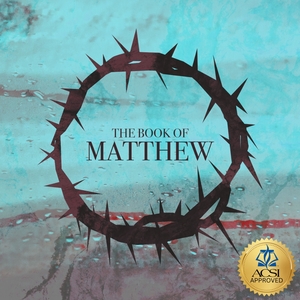At what point of the crucifixion did Jesus take on all the sins of the world?
Christ’s physical death on the cross was important, yet it was just one moment in a series of events that collectively were His redemptive work.
First, Christ was publicly displayed by the Father as our substitute, our “scapegoat,” bearing our guilt during His cruxifixction experience:
Is. 53:4 Surely our griefs He Himself bore,
And our sorrows He carried;
Yet we ourselves esteemed Him stricken,
Smitten of God, and afflicted.
Is. 53:5 But He was pierced through for our transgressions,
He was crushed for our iniquities;
The chastening for our well-being fell upon Him,
And by His scourging we are healed.
Is. 53:6 All of us like sheep have gone astray,
Each of us has turned to his own way;
But the LORD has caused the iniquity of us all
To fall on Him.
Christ’s tortuous death experience was collectively an exercise in bearing our punishment publicly, as Paul says:
Rom. 3:24 being justified as a gift by His grace through the redemption which is in Christ Jesus;
Rom. 3:25 whom God displayed publicly as a propitiation in His blood through faith. This was to demonstrate His righteousness, because in the forbearance of God He passed over the sins previously committed;
Christ's public humiliation was made necessary for our sake, Paul says, so that we (i.e., the public) might recognize the Lord at work exacting a price for the sins He previously passed over. But Christ’s painful humiliation was only the beginning of His redemptive work. His cruel torture was not a sufficient payment for sin by itself.
So Christ also had to die spiritually to take the curse that God pronounced on sin in the Garden. God told man that a “death” (i.e., spiritual separation from God) would be the penalty for disobedience to God’s word:
Gen. 2:16 The LORD God commanded the man, saying, “From any tree of the garden you may eat freely;
Gen. 2:17 but from the tree of the knowledge of good and evil you shall not eat, for in the day that you eat from it you will surely die.”
The word “die” in that context doesn’t refer to physical death but rather spiritual death. So Christ had to take our place in spiritual death in order to be our propitiation. The moment of His spiritual death occurred prior to Christ’s physical death on the cross, when the Father turned His face from Jesus:
Matt. 27:45 Now from the sixth hour darkness fell upon all the land until the ninth hour.
Matt. 27:46 About the ninth hour Jesus cried out with a loud voice, saying, “ELI, ELI, LAMA SABACHTHANI?” that is, “MY GOD, MY GOD, WHY HAVE YOU FORSAKEN ME?”
For three hours Jesus was separated from the Father’s love, which must have felt like an eternity to the sinless Son of God. Near the end of that three-hour period, the Son cried out asking why the Father had forsaken Him? Jesus’ question was not a reference to His crucifixion in general but specifically to the darkness, to the absence of the Father’s love which manifested as an absence of light.
As the darkness ended, Jesus’ separation from the Father ended too. Jesus was spiritually reunited with the Father and the second part of His atoning work was complete. In fact, consider the following statements Jesus made from the cross after the period of darkness had ended:
John 19:30 Therefore when Jesus had received the sour wine, He said, “It is finished!” And He bowed His head and gave up His spirit.
Luke 23:46 And Jesus, crying out with a loud voice, said, “Father, INTO YOUR HANDS I COMMIT MY SPIRIT.” Having said this, He breathed His last.
The eternal separation from the Father was finished at that point, and who having been reunited with the Father, Jesus could command His Spirit into His Father’s hands. Christ’s spirit separation from the Father was important, but it too wasn’t sufficient to atone for our sins.
At that moment Jesus’ physical body died, the next part of His redemptive work began. Specifically, the death of Jesus' body on the cross accomplished three things.
First, it made possible His resurrection after three days, which fulfilled prophecy and served as a sign to prove His claims of deity:
1Cor. 15:3 For I delivered to you as of first importance what I also received, that Christ died for our sins according to the Scriptures,
1Cor. 15:4 and that He was buried, and that He was raised on the third day according to the Scriptures,
Matt. 12:38 Then some of the scribes and Pharisees said to Him, “Teacher, we want to see a sign from You.”
Matt. 12:39 But He answered and said to them, “An evil and adulterous generation craves for a sign; and yet no sign will be given to it but the sign of Jonah the prophet;
Matt. 12:40 for just as JONAH WAS THREE DAYS AND THREE NIGHTS IN THE BELLY OF THE SEA MONSTER, so will the Son of Man be three days and three nights in the heart of the earth.
Secondly, His physical death made possible His spirit’s journey into the depths of Earth to join the captives (i.e., OT Saints) awaiting Him in Sheol so He could set them free:
Eph. 4:8 Therefore it says,
“WHEN HE ASCENDED ON HIGH,
HE LED CAPTIVE A HOST OF CAPTIVES,
AND HE GAVE GIFTS TO MEN.”
Eph. 4:9 (Now this expression, “He ascended,” what does it mean except that He also had descended into the lower parts of the earth?
Eph. 4:10 He who descended is Himself also He who ascended far above all the heavens, so that He might fill all things.)
Finally, it allowed Him to preach against the evil spirits held in torment:
1Pet. 3:18 For Christ also died for sins once for all, the just for the unjust, so that He might bring us to God, having been put to death in the flesh, but made alive in the spirit;
1Pet. 3:19 in which also He went and made proclamation to the spirits now in prison,
1Pet. 3:20 who once were disobedient, when the patience of God kept waiting in the days of Noah…
After Jesus’ had fulfilled Scripture by spending three days in the grave, He was resurrected so He could perform the final – and most important – part of His redemptive work. Jesus traveled in bodily form into the Heavenly realm to apply His blood on the mercy seat in the Heavenly tabernacle. This application of His perfect blood was the moment Jesus made atonement for all sin:
Heb. 9:11 But when Christ appeared as a high priest of the good things to come, He entered through the greater and more perfect tabernacle, not made with hands, that is to say, not of this creation;
Heb. 9:12 and not through the blood of goats and calves, but through His own blood, He entered the holy place once for all, having obtained eternal redemption.
1Pet. 1:18 knowing that you were not redeemed with perishable things like silver or gold from your futile way of life inherited from your forefathers,
1Pet. 1:19 but with precious blood, as of a lamb unblemished and spotless, the blood of Christ.
Having applied His own blood to the mercy seat in the Heavenly tabernacle, only then was Jesus’ atoning work complete:
Heb. 10:11 Every priest stands daily ministering and offering time after time the same sacrifices, which can never take away sins;
Heb. 10:12 but He, having offered one sacrifice for sins for all time, SAT DOWN AT THE RIGHT HAND OF GOD,
So the atoning work of Christ took several steps beginning with His public shaming on the cross, His spiritual separation from the Father, His physical death and resurrection, and His application of blood in the Heavenly tabernacle.
Scripture quotations taken from the (NASB®) New American Standard Bible®, Copyright © 1995, 2020 by The Lockman Foundation. Used by permission. All rights reserved. www.lockman.org








